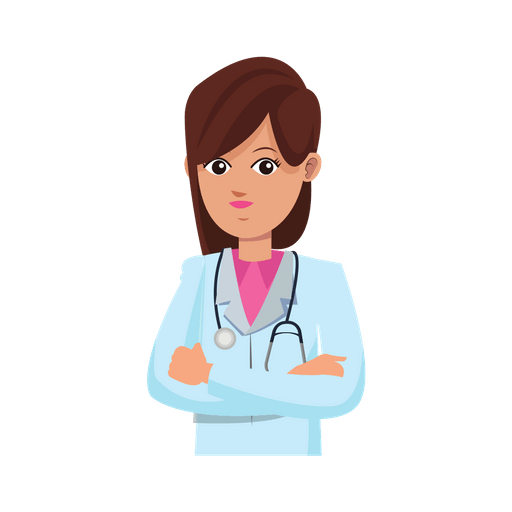Overview
There is a lot of confusing information about menopause. One of the reasons is the terminology. Let’s take a look at some of the words in the menopause lexicon with a focus on understanding the signs. Because despite the existence of menopause since the creation of woman, it is often difficult to miss the signposts. Unlike menstruation, where a young woman knows clearly that she is experiencing the rite of passage, menopause presents itself shrouded in silence and mystery.

Menopause is a natural part of the female aging process that occurs as a result of a woman’s declining estrogen levels. She stops having monthly periods, and is no longer able to get pregnant naturally. It marks the end of a woman’s reproductive period. A woman has reached menopause when her period ceases for twelve consecutive months. If she has it for 11 months, and then has a period, the clock starts again. According to HHS Office on Women’s Health, the average age for menopause in the United States is 51 (Office on Women’s Health, 2017). The age varies but typically occurs between 45-55 years of age. It’s worth mentioning that some women experience menopause before they hit 40. This is medically referred to as premature menopause or premature ovarian insufficiency.
Premature Menopause
Early menopause affects a few women and happens before the age of 40. Unfortunately, there is no clear cause in many cases. Premature menopause can be natural or induced. Smoking and using certain medicines or treatments can trigger premature menopause. The symptoms of premature menopause are mostly similar to those of natural menopause. Women experiencing premature menopause have to cope with additional emotional and physical concerns.
Perimenopause: the crazy years
Take note – menopause does not happen all at once. Your periods will begin to become less frequent and vary in intensity and duration over time (probably years) as your body transitions before menstruation stops altogether. This transition time is called peri-menopause, or often just the crazy years of roller-coaster hormone fluctuations. Every woman is different, but generally the transition will last somewhere between three to ten years. For example, if you assume a woman will reach menopause at 51, then the transition time could start for her around 41. Most women don’t realize the extensive gap between reproducing years and non-reproducing years, and the potential symptoms generated by this gap.
Perimenopause starts when your body begins to produce less estrogen and progesterone. You may start to experience a few fun symptoms commonly associated with menopause like hot flashes, night sweats, foggy brain etc. Your menstrual cycle may become irregular because you may not ovulate every month, but it would not cease at this stage. Take note: You can get pregnant during this transitional period.
Postmenopause
Postmenopause refers to a period that begins a year after a woman’s last period ends and continues until death, according to Healthspan (Karpinski, 2017). Symptoms at this stage are not as severe as during perimenopause. Postmenopausal women are however at higher risks for health conditions such as cardiovascular disease, osteoporosis, and stroke. Medication and lifestyle adjustments may reduce the risk of some of the mentioned conditions.
Causes of Menopause
As mentioned, menopause usually occurs naturally, usually after age 45. It occurs due to a gradual change in the balance of your body’s sex hormones, which typically happens as you get older. Your ovaries no longer produce as much of the hormones estrogen and progesterone. Ovaries are the primary sources of female hormones that control the development of feminine body characteristics. These two hormones are imperative in a woman’s fertility. Estrogen regulates menstruation whereas progesterone prepares your body for pregnancy. This means that the ovaries may no longer release an egg each month. Menopause can also be caused by ovary removal (bilateral oophorectomy); underlying medical conditions such as Addison’s disease, hypothyroidism and Down syndrome; and some breast cancer treatments like radiotherapy and chemotherapy
Signs of Menopause

Despite being a natural progression in a woman’s body, menopause can lead to profound changes that trigger various noticeable symptoms. During the transition to menopause (you know the word – perimenopause), the changing hormone levels affect your menstrual cycle causing multiple symptoms like problems sleeping and hot flashes. These symptoms can affect your emotional health and lower your energy. Signs of menopause vary in severity and duration. Overweight women and women who smoke are likely to experience more severe symptoms, or their symptoms may last longer than other women. Some women have no symptoms or experience very mild symptoms. Most women experience menopausal symptoms on some level.
As mentioned, the symptoms begin years before the end of menstruation and can last many years after your period ceases. Some symptoms are quite severe and can adversely affect your everyday activities. Talk to your healthcare provider about how best to manage your symptoms. Common symptoms of menopause include:
- Hot Flashes – hot flashes are the most common menopause symptom, especially during perimenopause. They refer to a sudden sensation of heat on the upper part of your body. You may sweat profusely during the hot flash and shiver after the flash.
- Trouble Sleeping – you will find difficulty getting a good night sleep due to anxiety or insomnia. According to CDC National Center for Health Statistics, perimenopausal women were most likely to sleep for less than seven hours in a 24-hour period (Rothwell & Madans, 2017).
- Vaginal dryness, itching, and discomfort – vaginal dryness can cause pain during sexual intercourse.
- Irregular Periods – your periods may be heavier or lighter, or they may come less often or more often especially during perimenopause.
- Night Sweats – these are hot flashes occurring during the night; the problem can be more frustrating though because many women have to change their bed sheets
- Urge to urinate more frequently – you will find it hard to hold urine for long enough and may experience leaking urine when sneezing.
- Less hair on the head and more facial hair.
- Increased Anxiety and Mood Swings – you will find yourself unusually anxious and easily irritable. According to North American Menopause Society, anxiety is a feeling of nervousness, fear, dread or apprehension accompanied by tension or restlessness (The North American Menopause Society, 2015). Hormonal changes often trigger mood swings and depressed feelings.
- Reduced Sex Drive – you may experience changing feelings about sex, usually low libido.
- Memory and Concentration Problems – menopause can impact cognitive functions like concentration.
When to See a Doctor
 The best time to see a physician is if you are experiencing symptoms that affect your quality of life or if you are experiencing the symptoms earlier than expected. The doctor will confirm whether you are menopausal based on the symptoms. The doctor will recommend the appropriate treatment based on your symptoms, personal preferences, personal medical history and family medical history. In some cases, the doctor may do health screening tests like a blood test or follicle-stimulating hormone (FSH) test if you experience the symptoms early. The blood tests will help to diagnose suspected premature menopause. The doctor may propose other tests and exams if suggested by your history. Medicines and treatments will play a prominent role in helping you relieve your symptoms. Continue getting medical appointments during and after menopause. Regular visits for preventive health care and addressing medical concerns are highly recommended.
The best time to see a physician is if you are experiencing symptoms that affect your quality of life or if you are experiencing the symptoms earlier than expected. The doctor will confirm whether you are menopausal based on the symptoms. The doctor will recommend the appropriate treatment based on your symptoms, personal preferences, personal medical history and family medical history. In some cases, the doctor may do health screening tests like a blood test or follicle-stimulating hormone (FSH) test if you experience the symptoms early. The blood tests will help to diagnose suspected premature menopause. The doctor may propose other tests and exams if suggested by your history. Medicines and treatments will play a prominent role in helping you relieve your symptoms. Continue getting medical appointments during and after menopause. Regular visits for preventive health care and addressing medical concerns are highly recommended.
Treatment and How to Stay Healthy During and After Menopause
There are a number of treatment options available ranging from lifestyle changes to hormone replacement therapy. The most important thing you can do for yourself is to be aware of your symptoms and be able to discuss them with your healthcare provider. The more detailed information you have, the higher the chance of identifying the optimal treatment protocol. Consider using a symptom tracker, or just write them on a calendar.
- Regular Exercising – this is a lifestyle change that will help you maintain a healthy weight and fit body. Try and get at least 20-30 minutes of physical activity every day. Consult with your doctor and ask for a recommendation of the right activities for you.
- Eating a Balanced Diet – get the right amount of minerals, vitamins, fiber and other essential vitamins during and after menopause.
- Cognitive Behavioral Therapy (CBT) – you will be required to attend therapy sessions that will help to reduce your anxiety and low mood.
- Vaginal Estrogen Creams, Moisturizers, and Lubricants for Vaginal Dryness.
- Hormone Replacement Therapy (HRT) – your GP will advise on prescription medicine to help you relieve vaginal dryness and hot flashes. They include skin patches, vaginal ring, tablets, implants and gels that replace estrogen which relieve menopausal symptoms. HRT is safe for most women but has its risks. It is advised that you use the lowest dose that works the most effectively.
If your menopause symptoms persist after treatment, your GP can refer you to a menopause specialist. Not every healthcare provider understands menopause so the addition of a specialist to your health care may be important. You have to be your own advocate.
The Takeaway
Menopause is a turning point in a woman’s life and not a disease. Even though it brings forth physical and emotional discomfort, it can be viewed as the beginning of a new and rewarding phase of your life. Although you can’t prevent menopause and the rollercoaster of hormone issues, you can educate yourself about how to manage them and gain a much better understanding of yourself. This transition is just a new beginning.
References
- Karpinski, M. (2017, 07 19). When Am I Postmenopausal? Signs and Symptoms of Postmenopause. Retrieved 01 16, 2018, from Healthspan:
- https://www.healthspan.co.uk/advice/when-am-i-postmenopausal-signs-and-symptoms-of-postmenopause
- Office on Women’s Health. (2017, 10 20). Menopause Basics. Retrieved 01 16, 2018, from Office on Women’s Health: https://www.womenshealth.gov/menopause/menopause-basics
- Rothwell, C. J., & Madans, J. H. (2017, 09 7). Sleep Duration and Quality Among Women Aged 40–59, by Menopausal Status. Retrieved 01 16, 2018, from National Center for Health Statistics: https://www.cdc.gov/nchs/products/databriefs/db286.htm
- The North American Menopause Society. (2015, 01 01). Menopause Glossary. Retrieved 01 16, 2018, from The North American Menopause Society: http://www.menopause.org/for-women/menopause-glossary




5 Comments
Pingback: Menopause Joint Pain | Why woman experience it. - Vergo Woman
Pingback: Why Women Experience Menopause Zits - Vergo Woman
Pingback: Menopause in the 30s: Symptoms and Treatment Options - Vergo Woman
Pingback: Estrogen Deficiency: Overview, Signs and Symptoms and Treatment Options - Vergo Woman
Pingback: My Homepage